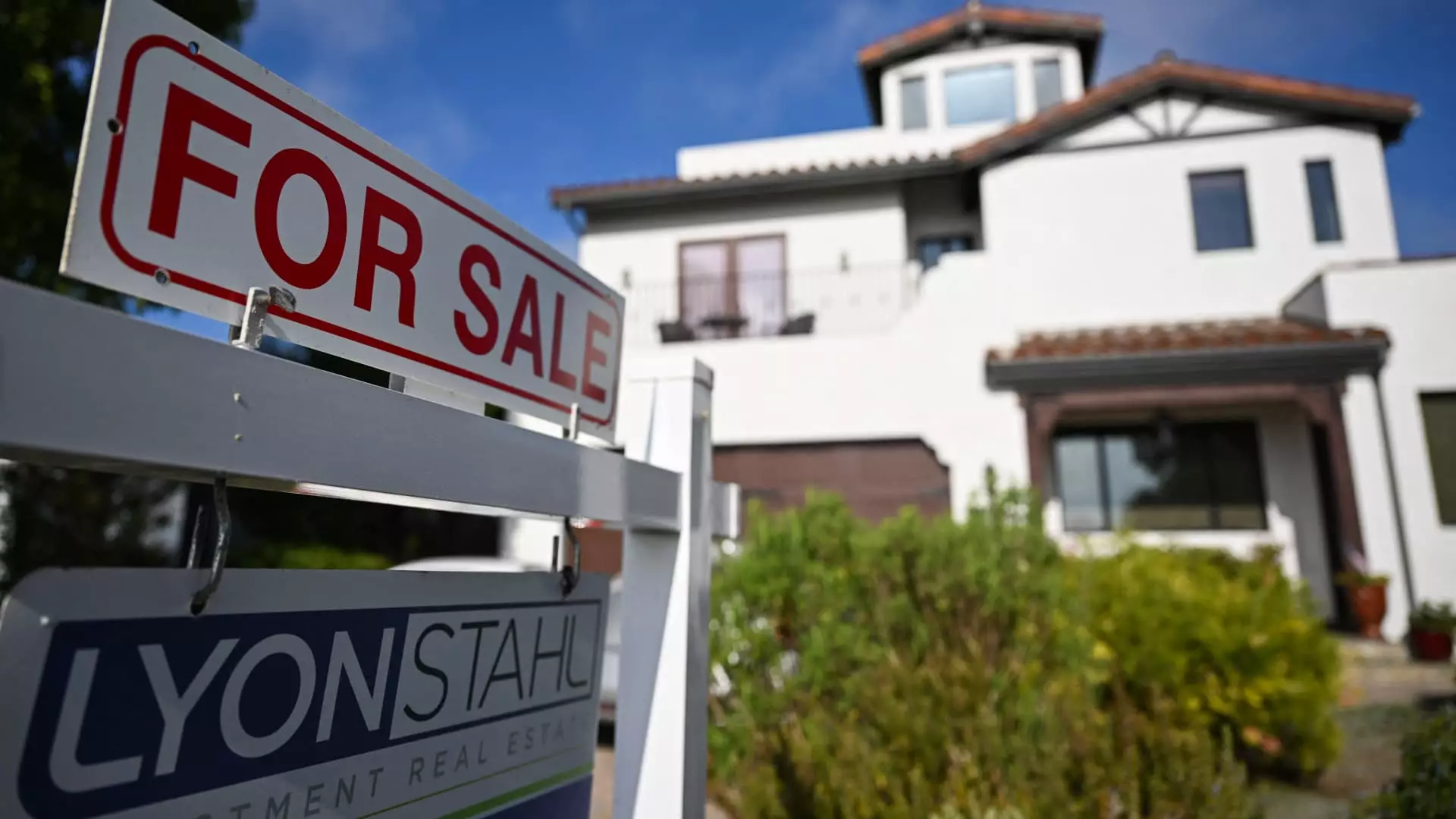On Thursday, the financial landscape took an intriguing turn as the average rate for the 30-year fixed mortgage dipped by 12 basis points, landing at 6.63%. This reduction has been spurred by the Trump administration’s recent tariff pronouncement, creating ripples across various sectors. The stock market’s swift sell-off caused many investors to flock toward bonds, effectively leading to a drop in bond yields—a scenario that typically mirrors mortgage rate trends. This sudden downturn brings forth a mixed bag of implications as we grapple with the overarching cloud of uncertainty surrounding trade policies and their impact on economic health. While this adjustment in rates sounds promising, one must delve deeper to understand the undercurrents that continue to hinder home affordability.
High Prices Amid Fickle Rates: A Home Buyer’s Nightmare
Even as mortgage rates mildly ease, aspiring homeowners confront a staggering reality: affordability remains elusive. The ongoing squeeze has driven the monthly payment for the typical U.S. buyer to an alarming $2,802, the highest it has been in recent history. With home prices climbing approximately 3.4% year over year, this situation poses a stark divergence between lowering rates and soaring housing costs. The latest data reveals that only 30% of American households can even contemplate affording a $400,000 home, given the median new home price is projected at $460,000 by 2025. Drawing from the National Association of Home Builders, the minimum income to secure a $200,000 home at current rates hovers around $61,487—a threshold nearly 53 million households will not meet in the coming years.
The fact that homeownership has become a luxury rather than a feasible goal for the average American should incite a serious reconsideration of fiscal policies. Policies designed to create an inclusive economy seem to fall short when confronted with market pressures. The concerning reality is that the housing market increasingly caters to higher income brackets, leaving the lower end of the market gasping for air.
Supply Dynamics: A Problematic Misalignment
While we see a modest increase in the supply of homes hitting the market—a promising signal in any other context—the reality is decidedly bleak. The new offerings are often far from the price points where demand is crying out for relief. As chronic underbuilding persists in the wake of the Great Recession, the market struggles to align supply with the ever-pressing need for affordable housing. Even as agents report an uptick in home listings as sellers rush to capitalize on what they perceive are peak market conditions, these homes often come in at price points unattainable for the vast majority.
Real estate agents, like Matt Ferris from Redfin, point toward shifts in buyer sentiment, with many sellers acting out of fear rather than opportunity. Job stability, especially in governmental sectors, is becoming a critical consideration as work-from-home dynamics continue to reshape buyer desires. This fluctuation in employment certainty could lead to future market instability as the nation grapples with a realignment toward urban living.
A Market Rebalancing: Opportunities and Challenges Ahead
March brought forth a glimmer of complexity to the housing matrix: a 10% annual rise in new listings balanced against a concurrent increase in homes lingering on the market. The statistics reflect a shifting tide—a reluctance most palpable among buyers who feel the summer market will offer them more options. Even significant metropolitan areas are not exempt from these fluctuations, with places like Jacksonville and Miami experiencing declines as stark as 15.1%. The inverse trend hints at a haunting new normal, challenging the resilience of the housing market.
Despite the uptick in supply, home sales are dipping, suggesting a cautionary stance among buyers driven by high costs and economic instability. Danielle Hale, Realtor.com’s chief economist, suggests that we are indeed witnessing a market readjustment. This shift opens pathways for buyers but simultaneously reflects the economic pressures still weighing heavily on the average household.
As mortgage rates flirt with historic lows amid a chaotic economic backdrop, it is paramount to recognize that these fluctuations may only offer temporary relief. The housing market’s future hangs precariously in balance, dependent not only on interest rates but on a comprehensive re-evaluation of what it means to realistically achieve homeownership in America. The current state may serve as a vital warning for policymakers to prioritize accessibility and affordability above superficial market trends if we wish to navigate out of this looming crisis.


Leave a Reply